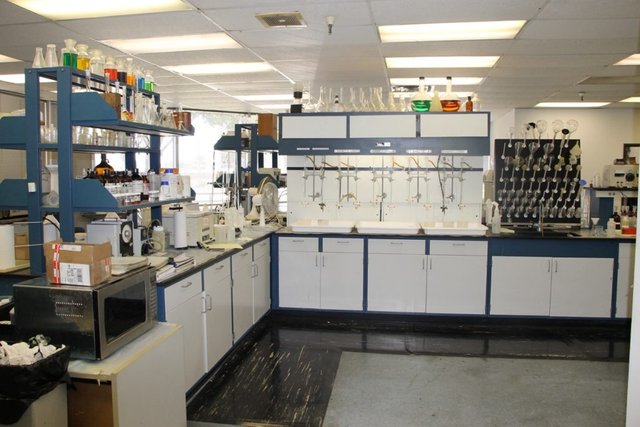Nickel & Zinc Plating Process Gets Complex When High Quality Is Required

Metal plating processes, such as electroless nickel plating and zinc plating, play a crucial role in enhancing the durability, corrosion resistance, and overall quality of metal parts. Achieving high-quality metal coatings involves intricate processes and meticulous control of many factors. Understanding the differences between these plating techniques and their applications is fundamental to ensure superior results in diverse industries. Electroless nickel plating and zinc plating are just two widely used methods, each offering unique benefits for different types of metal parts.
Electroless Nickel Plating
Electroless nickel plating is an auto-catalytic process that deposits a uniform layer of nickel-phosphorous or nickel-boron onto metal surfaces. Unlike electroplating, it doesn't require an electrical current for deposition, offering excellent coverage even on complex shapes or internal surfaces. This process is favored for components requiring exceptional wear resistance, corrosion protection, and uniformity of coating thickness. It finds applications in industries such as aerospace, automotive, electronics, and oil & gas, where parts are subjected to harsh conditions.
Key factors influencing the quality of electroless nickel plating include precise temperature control of the plating bath and the chemical composition of the solution. Maintaining optimal temperature in the plating bath is critical to control the rate of deposition and ensure uniformity across the part’s surface.
Commonly used plating chemicals for electroless nickel plating include nickel salts, reducing agents like sodium hypophosphite or dimethylamine borane, and stabilizers. These chemical conversion coating products facilitate the reduction of nickel ions onto the substrate, resulting in a high-quality, corrosion-resistant coating.
Laboratory testing is essential to evaluate thickness measurements, adhesion tests, and corrosion resistance assessments, and other quality assurance testing. These tests ensure that the coating meets industry standards and specific requirements of the intended application.
Zinc Plating
Zinc plating, on the other hand, involves the electrodeposition of a layer of zinc onto metal surfaces, providing effective corrosion protection. It is commonly used in industries like automotive, construction, and electronics for parts exposed to atmospheric conditions.
Zinc plating offers sacrificial corrosion protection, meaning the zinc coating corrodes before the underlying metal, extending the lifespan of the components. Fasteners, automotive parts, and steel structures benefit significantly from zinc plating due to its ability to prevent rust and corrosion.
Temperature control is crucial in the zinc plating process as well to maintain the bath within the recommended range for optimal plating results. A DC plating rectifier plays a pivotal role in regulating the electrical current applied during the plating process, ensuring uniform deposition and adhesion of the zinc coating.
The chemicals used in zinc plating include zinc salts like zinc chloride or zinc sulfate and additives for improving brightness, ductility, and corrosion resistance. These additives help achieve desired coating characteristics while maintaining process stability.
An electric immersion water heater often aids in maintaining the optimal temperature of the plating bath, contributing to consistent and high-quality zinc coatings. Similar to electroless nickel plating, rigorous laboratory testing is essential in zinc plating to validate coating thickness, adhesion strength, and corrosion resistance. This ensures compliance with industry standards and confirms the suitability of the coating for its intended purpose.
Importance of Quality Control and Sources
Maintaining high-quality standards in metal plating processes is critical to meet the demanding requirements of various industries. Accurate temperature control, proper chemical compositions, and precise testing methodologies contribute significantly to achieving superior coatings.
According to the American Galvanizers Association, proper temperature control within the plating bath is crucial for achieving consistent and high-quality zinc coatings. Additionally, a study published in the Journal of Materials Engineering and Performance highlights the significance of thorough testing methods in evaluating the performance of electroless nickel coatings for specific applications.
Plating chemicals for zinc plating, such as zinc chloride or zinc sulfate, along with additives for enhancing properties, play a vital role in ensuring effective and durable coatings. The use of an AC to DC plating rectifier is integral to maintaining uniform electrical currents during the zinc plating process, optimizing coating deposition and adherence. A Process Technology heater supports maintaining the ideal temperature of the plating bath, contributing to the consistency and quality of zinc coatings.
The role of a chemical testing lab is pivotal in validating the quality of coatings through comprehensive testing procedures, ensuring adherence to industry standards and suitability for intended applications.
Electroless nickel plating and zinc plating stand as sophisticated processes pivotal in bolstering the endurance and utility of metal components. Their efficacy is predicated on meticulous parameter control, adherence to precise chemical compositions, and rigorous testing protocols to ensure top-quality coatings suitable for a myriad of industrial applications.